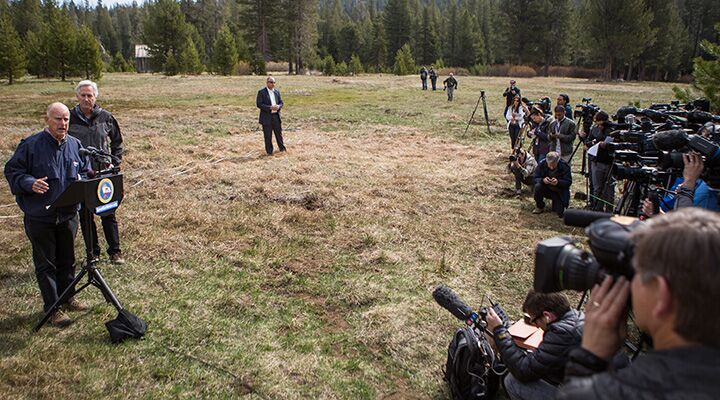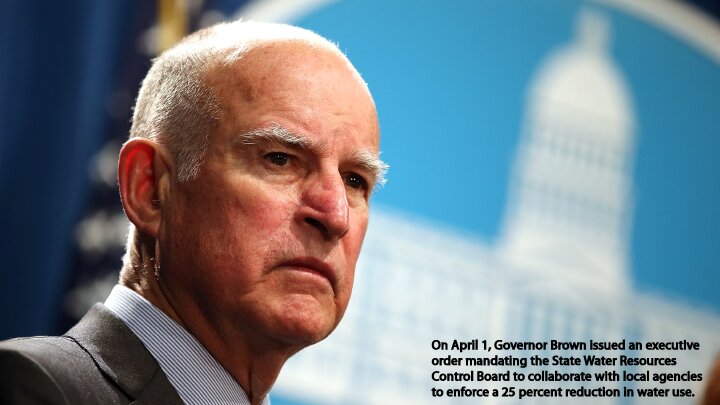
California Mandates Unprecedented Water Restrictions
When California Gov. Jerry Brown declared a water emergency back in January 2014, he and other state authorities debated the imposition of water restrictions. One water district general manager said, “We want to save the big hammer for when we know it’s really bad.”
That big hammer has been saved long enough.

On April 1, Governor Brown issued an executive order mandating the State Water Resources Control Board to collaborate with local agencies to enforce a 25 percent reduction in water use. These state-wide, compulsory water usage restrictions are unprecedented in California’s history. From industries to homes, golf courses to cemeteries, college campuses to highway medians—all aspects of California life will be affected by the state’s new impositions. Infractions will be punished by fines, among other punitive measures. Prohibitive water rates will be introduced to discourage wastage.
Last year, Brown only asked for a voluntary 20 percent reduction in water use. Now, the governor says, “It’s a different world.”
Some of the measures outlined in Governor Brown’s executive order include replacing 50 million square feet of lawn with “drought tolerant landscaping,” a temporary rebate program for consumers to replace water-wasting household appliances with more efficient ones, and prohibiting new businesses and homes from installing regular irrigation systems. Some school campuses are already in the process of replacing their stadiums’ natural turf with artificial turf and remodeling their toilet systems.
Complying with California’s water restrictions will obviously be costly, and reduced water supplies for businesses will result in a corresponding loss of revenue. That’s part of the reason this “big hammer” of mandatory water cuts was saved for last.
According to the United States Drought Monitor, 93.4 percent of California is facing “severe drought,” and 99.9 percent of the Golden State is “abnormally dry.”
“This is the new normal,” Brown said in his historic announcement, which he issued at the annual snowpack measurements in the Sierra Nevada mountain range. “We will learn how to cope with this.”
“Today we are standing on dry grass where there should be five feet of snow. The historic drought demands unprecedented action,” announced Brown. “People should realize we’re in a new era. The idea of your nice little green grass getting lots of water every day, that’s going to be a thing of the past.”
The snowpack is a critical source of water—it stores about a third of California’s water supply for the summer. The snowpack measurements on April 1—a time when levels are at their peak—were at their lowest in California’s history: a meager 6 percent of the average for that day. By comparison, last year’s measurement was 25 percent of the April 1 average—not a good figure by any means but clearly much better than this year.
All of California’s major water reservoirs are below their historic averages.
When President Barack Obama visited California to assess the severity of the drought in February last year, he warned: “California is our biggest economy [and] our biggest agricultural producer, so what happens here matters to every working American, right down to the cost of food that you put on your table.”
As our free book The United States and Britain in Prophecy explains, California has been the home of some of the choicest blessings on Earth. But those blessings are being replaced by curses in dramatic fashion.
Request your free copy of The United States and Britain in Prophecy to understand the real cause of California’s curses and how they are soon to end—permanently.
